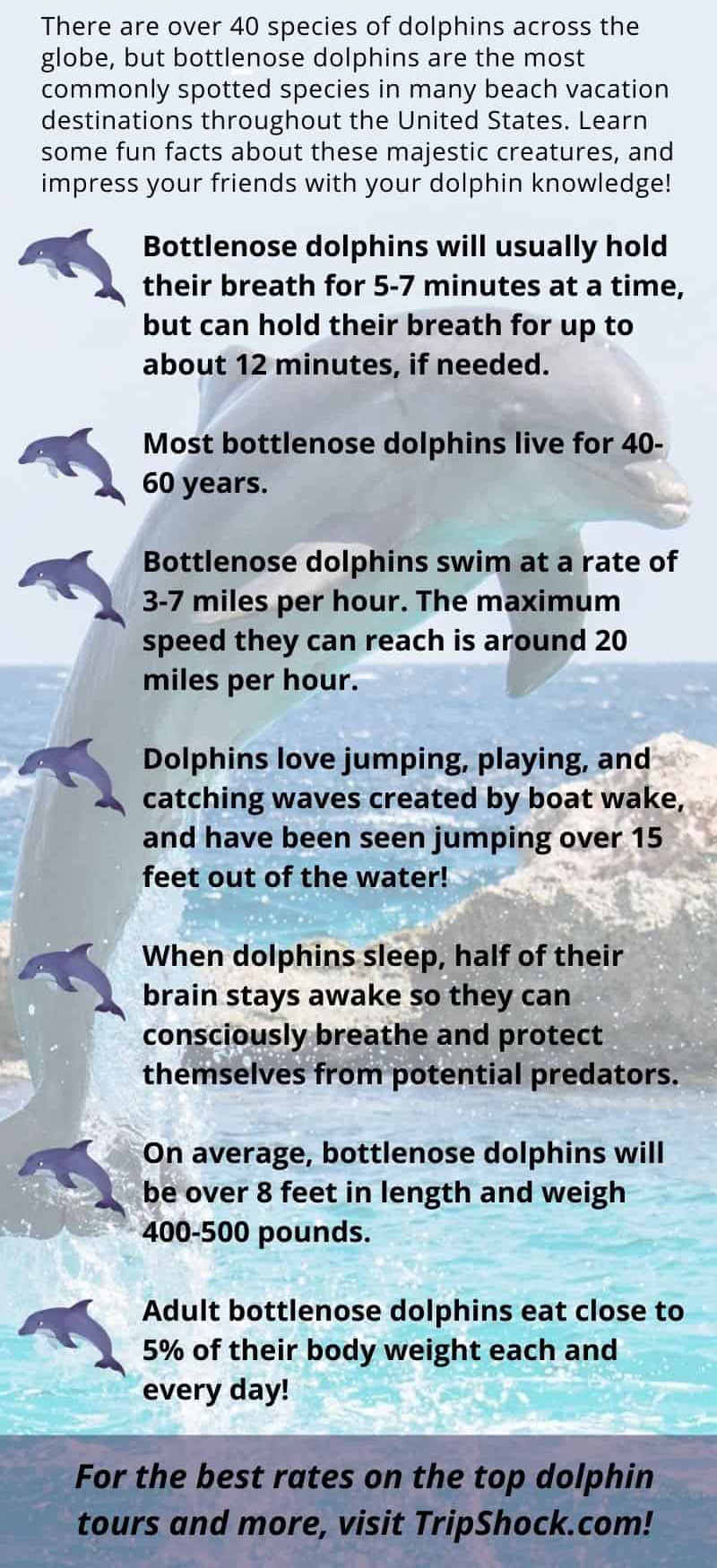Understand How Dolphin Facts Clarify Marine Ecosystems
Understand How Dolphin Facts Clarify Marine Ecosystems
Blog Article
Discover the Wonders of Dolphins: Extraordinary Truths You Didn't Know
These creatures play a vital role in preserving the balance of marine communities while displaying remarkable analytical abilities. What various other unusual facets of dolphin habits remain to be uncovered?
Dolphin Knowledge and Trouble Resolving
Showing impressive cognitive abilities, dolphins are commonly identified for their knowledge and analytical abilities. Research study has actually revealed that these marine creatures have advanced thinking abilities, usually involving in complicated social interactions that call for substantial cognitive handling. Notably, dolphins are experienced at using cutting-edge strategies to get rid of difficulties in their environment, such as making use of tools or collaborating with others to search for food.
Researches reveal that dolphins can follow complex directions and do jobs that include multi-step remedies, a measure of their capacity to strategy and perform. Their capability for discovering is additional evidenced by their excellent memory, which permits them to retain and make use of information over extended periods. Cognitive tests have demonstrated that dolphins can comprehend abstract ideas, including mathematical relationships and spatial recognition.
Moreover, dolphins display an exceptional level of self-awareness, as shown by their ability to acknowledge themselves in mirrors. This trait is typically considered a characteristic of advanced intelligence, paralleling the cognitive capacities observed in people and excellent apes. In general, the intelligence and analytical abilities of dolphins highlight their complex psychological faculties and versatility in varied environments.
Distinct Interaction Strategies
Dolphins stick out for their one-of-a-kind communication methods, which are essential for their social communications and survival in the wild. These highly smart aquatic mammals use a sophisticated system of vocalizations, body language, and echolocation to convey messages and coordinate activities.
Vocalizations include clicks, whistles, and other audios that offer numerous functions, from revealing feelings to signaling alarm or working with group activities while hunting - Dolphin Facts. Each dolphin has a trademark whistle, comparable to a name, which fosters specific recognition within shells. This type of identification is crucial for keeping social bonds

Echolocation is one more exceptional aspect of dolphin interaction. By giving off audio waves and analyzing the returning echoes, dolphins can navigate their atmosphere, find target, and also determine various other aquatic creatures.
Social Frameworks and Relationships
The complex communication techniques utilized by dolphins play a considerable role in forming their social structures and partnerships. These very intelligent aquatic creatures commonly develop complicated social teams called capsules, which can vary in size and composition. A regular covering might include a few people to several loads, and it is typically led by a leading lady.
Dolphins are understood for their solid social bonds, which are defined by participating habits such as hunting together, common grooming, and also playful communications. These partnerships are essential for their survival, as they enhance the effectiveness of jobs such as foraging and safeguarding the team from predators.
Within coverings, dolphins display a range of social power structures and duties, which can transform based upon the dynamics of the team. As an example, some people may take on the function of caretakers for calf bones, while others may act as defenders. Additionally, dolphins are known to display altruistic behaviors, assisting distressed or hurt sheathing members, even more reinforcing their social ties. In general, the social frameworks and relationships of dolphins mirror an innovative degree of social company that adds to their flexibility and success in varied marine environments.
Role in Marine Ecosystems
In marine ecosystems, dolphins play an important duty as both predators and prey, adding to the general health and wellness and balance of their environments. As pinnacle predators, dolphins aid control the populaces of their prey, which consists of fish, squid, and shellfishes. By controlling these populations, dolphins prevent overgrazing of aquatic sources, consequently promoting biodiversity and supporting the framework of the ecological community.

Furthermore, dolphins add to nutrition biking in aquatic environments. Their feeding routines and succeeding waste manufacturing enhance the water column, helping with the development of phytoplankton, which creates the base of the marine food chain. In general, the existence of dolphins in aquatic communities is essential for keeping eco-friendly equilibrium, sustaining the wellness of various other marine varieties, and sustaining the general vigor of nautical settings.
Impressive Physical Capabilities
One of one of the most impressive facets of dolphins is their impressive physical abilities, which allow them to grow basics in varied aquatic atmospheres. These highly smart animals have streamlined bodies, enabling for reliable activity via water. Their powerful tails, or flukes, can push them at speeds of as much as 25 miles per hour, allowing quick navigation and evasion from predators.
Dolphins also exhibit remarkable dexterity, doing acrobatic tasks such as spins and turns. Furthermore, dolphins possess an unique capacity understood as echolocation, which enables them to navigate and quest in dark or murky waters.
Additionally, dolphins exhibit remarkable endurance, efficient in swimming cross countries without tiring. Their thick layer of blubber not just offers insulation however also help in buoyancy. Jointly, these physical features highlight the adaptability and resilience of dolphins, making them several of the most interesting animals in the sea.
Conclusion
In conclusion, dolphins exemplify exceptional knowledge through their problem-solving capabilities and advanced interaction strategies. As apex predators, dolphins play a critical role in preserving the equilibrium of aquatic ecological communities. Dolphin Facts.
Overall, the social structures and relationships of dolphins reflect a sophisticated level of social organization that contributes to their adaptability and success in varied marine environments.

Overall, the visibility of dolphins in aquatic ecosystems is crucial for maintaining eco-friendly balance, supporting the wellness of other aquatic types, and sustaining the general vigor of oceanic settings.
One of the most impressive aspects of dolphins is their impressive physical capabilities, which enable them to grow in varied marine environments.
Report this page